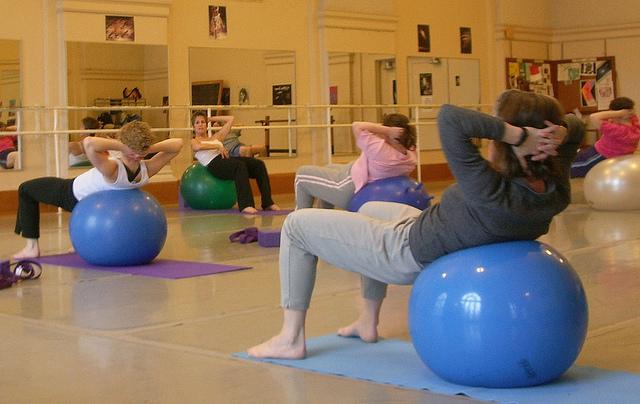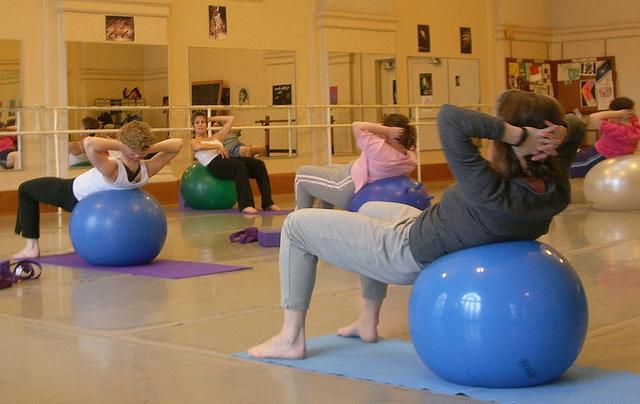
Credit: Oregon State University
CORVALLIS, Ore. – Web page articles and other written materials designed to encourage physical activity are often too difficult to be easily read and understood by most U.S. adults, limiting their effectiveness, new research from Oregon State University shows.
Written resources can enhance and support health behavior changes and are considered a fundamental component of health promotion efforts. If they are not easy to read, they are less useful and access inequities will continue to persist, said Brad Cardinal, a kinesiology professor in the College of Public Health and Human Sciences at OSU.
"If we think it's an important message, we should make it as broadly accessible as possible," he said.
Easily-read resources using plain, simple language are more likely to have a positive impact. They also are more likely to promote health literacy, or the knowledge, motivation, confidence and skill to obtain and apply accurate health information. Those with higher health literacy are more likely to engage in preventive health behaviors, including regular physical activity, said Cardinal, a national expert on the benefits of physical activity.
"When people access the web and try to read something about exercise or health that is above their comfort level, they can easily become confused. Taken to extremes, misunderstandings could result in unnecessary pain or injury," he said. "But someone with stronger reading skills and higher health literacy could read the same thing and use the information to be successful."
Cardinal and OSU doctoral candidate Jafrā D. Thomas recently published two papers on the topic. The first paper, a readability review of more than 150 written resources, was published in the Sociology of Sport Journal.
The second, an analysis of 14 past studies of readability of physical activity resources, was just published in the journal Quest. Thomas is lead author of both papers; Brian Flay, professor emeritus in OSU's College of Public Health and Human Sciences, is also a co-author on the second paper.
In the first paper, Thomas and Cardinal reviewed 163 articles and downloadable documents on popular health promotion websites such as WebMD.com, Heart.org and CDC.gov. They grouped the articles based on their sources: government, professional association, voluntary health agency or commercial, and used several readability formulas to measure the reading grade level of each resource.
They found that more than 50 percent of the materials, which included a range of topics such as physical activity and exercise ideas, technical instruction and management of specific health conditions, were written above an eighth-grade reading level, the maximum recommended for accessibility. Only 2.5 percent were written for optimal reading levels, which is fifth-grade or lower.
In the second paper, Thomas, Flay and Cardinal examined 14 studies published between 1992 and the present, which when combined, had reviewed more than 800 written health educational resources on topics such as physical activity, physical fitness or sports medicine.
The average reading level across the studies was greater than 10th-grade, more than two full levels above the maximum recommended eighth-grade reading level. There was no difference in the reading level of resources produced by the government and those by non-government agencies.
The findings suggest that despite the efforts underway by public health officials and policymakers to improve the readability of health resources, through efforts such as the 2010 Plain Writing Act, the problem continues to persist, Cardinal said.
"The goal of such resources, regardless of who produced or disseminated them, should be to assure they are readable," he said. "This is the minimum way of trying to assure they are accessible for the widest possible audience."
The findings in both papers underscore the important role readability plays in reaching target audiences, and in particular underrepresented audiences such as those for whom English is a second language or those with less formal education, said Thomas.
"People with more education tend to participate more in physical activities, in part because they have more access to resources," he said. "When resources aren't readable, they are likely to favor people with more education and could contribute to disparities in physical activity rates."
Public health officials and policymakers can do their part by creating and following readability policies; checking readability of materials using tools already embedded in word-processing programs or that are free online; and running materials past focus groups to check for readability and comprehension, Thomas said.
"Approach the work with an inclusive mindset," he said. "Strive to keep things plain and simple and don't be afraid to give people options and ask them what they prefer."
###
Media Contact
Brad Cardinal
[email protected]
541-737-2506
@oregonstatenews
http://oregonstate.edu/
Original Source
http://bit.ly/2Hu1vjM http://dx.doi.org/10.1080/00336297.2018.1463269





